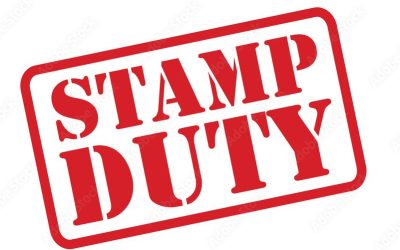Ms. Sakshi Jhalani, Intern, Khurana & Khurana, Advocates, and IP Attorneys looks into the fundamentals of Comparative Advertisement vis-a-vis Trade Mark Rights in India.
Advertising is indeed a crucial step in determining the future of any product. It is the most successful and proven way to attract the attention of potential consumers in the market. Since the consumers have a wide variety of products to choose from, often the advertisers resort to a practice of comparing their products from that of the competitors. While this is an acceptable practice, many times in order to gain more pecuniary benefits and mileage, competitors end up using such tactics that either mislead the customers or amount to the denigration of other’s products. Comparative advertisement is a unique practice, where a manufacturer compares his goods or service from that of his competitors for the purpose of promotion and increased sale of his goods.
Comparative advertisements can be divided into two categories, puffery and denigration. Imagine a producer making superlative claims indicating his product is best so as to influence the public into buying it. Now, if the same claim is made through degrading the image of an identifiable competitive product, it crosses the limited scope of puffery leading to the denigration of the product. This might not only amount to defamation of the competitor’s product but also mislead the consumers since most of the time to producers do not have a valid ground to claim that another product is not good.
Though advertisements were considered a part of the form of speech, they did not constitute ‘free speech’ since it was done merely for the purpose of commercial gain. This position was reversed in the case of Tata Press vs. Mahanagar Telephone Nigam Ltd., where the court held that advertisements are not only profiting the producers but there is a free flow of information in the free-market economy fulfilling the greater goal of public awareness. By virtue of this judgment, advertisements were held constitutive of ‘commercial speech’ under the ambit of Article 19(1)(a) of the Constitution.
Even though advertisements have been given constitutional protection under free speech, there cannot be blanket protection given to advertisements merely on the ground of public awareness. It needs to be checked that these advertisements are neither deceptive, nor they are disparaging the competitor’s goods. Initially, matters relating to untrue or misleading advertisements were governed under Section 36A of the Monopolies and Restrictive Trade Practices Act, 1969 (‘MRTP Act’), which dealt with ‘unfair trade practices’. However, the MRTP Act was repealed by Section 66 of the Competition Act, 2002. But, this did not leave traders remediless since the definition of ‘unfair trade practices’ was incorporated parimateria under Section 2(1)(r) of the Consumer Protection Act, 1986 (‘CP Act’). The scope of the CP Act was limited to the extent of providing recourse to the consumers only, it did not include manufacturers, sellers, or service providers.
The absence of a proper statutory instrument for advertisers to address their grievances led to the creation of a self-regulatory body called the Advertising Standards Council of India (‘ASCI’). The principles laid down by ASCI ensured that this practice of comparative advertisement is conducted in a fair way taking into consideration the interests of all the associated groups involved. It makes sure that the manner in which the comparison is laid out is not in a way that provides the producers with an undue advantage over the competitor’s product. It also ensured that the comparisons are accurate and are based on the facts so as to not deceive the potential consumers.
Even though ASCI laid down reasonable and fair guidelines, it lacked effective implementation and faced problems when infringement is caused by the actions of non-members. The problems covering such infringements are better addressed by Section 29(8) and 30(1) Trademarks Act, 1999 (‘the Act’). While Section 29(8) deals with infringement of trademarks when done through advertisements, section 30(1) provides an exception when such use of marks is done according to the “honest practices” in industrial and commercial matters. When a producer is using the method of comparative advertisement for promoting his/her goods or services, it might lead to dilution, tarnishment, or blurring of the trademarks of the competitors. The Act protects the interests of such producers, whose marks are likely to get denigrated because of the unfair actions of the competitors.
Honest practices, dilution, disparagement, all these essentials are not clearly defined under the Act but can be traced through various judgments throughout the course of time. In the case of Reckitt & Colman f India Ltd. vs. M.P. Ramchandram&Anr, the court dealt with the component of puffery as a part of the comparative advertisement for the first time. This case involved manufacturers of two clothing detergents ‘Robin Blue’, the plaintiff, and ‘Ujala’ the defendant. It was contended by the plaintiff that the defendant in his advertisement, had on purpose used a bottle similar to that of the plaintiff’s product. The defendant also mentioned in his advertisement that the plaintiff’s product was inefficient and was uneconomical. The court, in this case, held relied on the case of De Beers and held that a producer can declare his goods to be the best, or even better than his competitors even if the statement is untrue. But, while making such a comparison he cannot state that his competitor’s goods are bad, even if that is true. He cannot make any statement that might lead to a disparagement of his competitor’s goods.
Another landmark case that dealt with the meaning of the word disparagement is Pepsi Co. vs. Hindustan Coca Cola Ltd. Pepsi Co. alleged infringement of trademark as Coca-Cola, vide its advertisement has disparaged the products of Pepsi Co by calling Pepsi “Bacchon Wala Drink”. Further Coca Cola also used a bottle with the same color combination as that of Pepsi with the name “Peppi” written on it. The court while analyzing the meaning of disparagement held that an advertisement is considered to be defaming if it is undervaluing, bringing discredit, or dishonor upon the competitor’s product.
Further clarity is laid down by the court in the recent 2015 judgment of Havells vs. Amritanshu, where the advertisement in dispute dealt with the Hevells’s and Eveready’s LED bulbs. The question in issue was whether for an advertisement to be an ‘honest’ one, does the comparison between the producer’s and the competitor’s product must involve all the features. The Delhi high court in this case held that if an advertiser is highlighting only a special feature of his/her product, that makes it distinct from that of his competitor’s, he/she is allowed to do so as long as the comparison is true. The failure to compare all features of a product while comparing will not amount to disparagement. The court in this case also laid down certain tests to apply for the purpose of comparative advertising. The tests include the standard used in deciding a case of a comparative advertisement, a test of ‘honest’ advertising as per section 29(8) and 30(1), and a test of a ‘misleading advertisement’.
The status of comparative advertisement in foreign countries like the U.K. and the USA is more liberal when compared to India. Where the practice of comparative advertisements is a common trend, the producers are generally not allowed to make any superlative claims with respect to their products without providing any evidence. They are also allowed to compare their products with the competitors and mention that the other’s product is not as good as theirs provided they make a valid and reasonable claim. In my opinion, such a trend should be adopted in India as well, as making superlative claims about their products without them being true fails the main purpose of protecting the consumers from deceptive practices of traders. Also, if the claim made by the producer with respect to his competitor’s product is true, it should be allowed since, it will provide consumers with a valid reason to choose between a better product, and in the long run, promotes healthy trade practice as it will help the competitor to improve the quality of his goods.
About the Author: Ms. Sakshi Jhalani, Intern, at IP And Legal Filings. In case of any queries please contact/write back to us at support@ipandlegalfilings.com.

